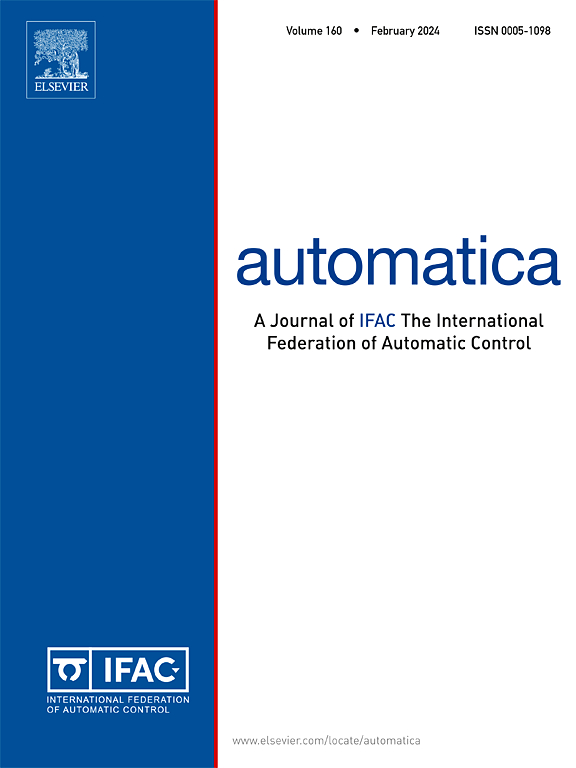分布式减振短节的滑移建模与检测
IF 5.9
2区 计算机科学
Q1 AUTOMATION & CONTROL SYSTEMS
引用次数: 0
摘要
钻井过程中的扭转振动对所使用的设备有害,导致性能不佳。最近开发的一种减轻这种振动的方法是在井的非垂直段的不同位置安装分布阻尼短节。涡流制动器在实践中可以主动控制,它可以抑制振动,但反扭矩会导致短节的横向运动,从而可能导致打滑。为了在作业过程中最大限度地减少减震短节与井壁之间的滑动,控制器需要知道这种情况是否发生以及何时发生,以便相应地改变控制输入。推导了一个以控制为导向的数学模型来描述短节在井筒内的横向和扭转运动,并将井筒摩擦建模为带有粘性的库仑摩擦。其次,提出了一种基于阻尼接头内惯性测量单元测量的滑移检测算法。将面向控制的阻尼小节模型与具有扭转振动的低阶钻柱模型耦合进行了仿真,其中反作用力阻尼扭矩导致小节沿井筒壁滑动。模拟的加速度计信号和由此产生的残差用于检测滑移来演示该方法。在高保真模拟器的数据上进一步验证了滑移检测方法。本文章由计算机程序翻译,如有差异,请以英文原文为准。
Modelling and detection of slipping in distributed damping subs for drillstring torsional vibration mitigation
Torsional vibrations during drilling are detrimental to the equipment used and result in sub-optimal performance. A recently developed method to mitigate such vibrations involves the use of distributed damping subs fitted around the drillstring at various locations throughout non-vertical sections of the well. An eddy current brake, which may be actively controlled in practice, dampens the vibrations but the reactionary torque results in lateral motion of the subs which may cause slipping. To minimize slipping between the damping subs and the wellbore wall during operation, the controller needs to know if and when this happens in order to alter the control input accordingly. A control-oriented mathematical model is derived to describe the lateral and torsional motion of a sub within the wellbore, with the wellbore friction modelled as Coulomb friction with stiction. Next, a slip detection algorithm based on measurements from inertial measurement units placed within the damping sub is proposed. A simulation of the control-oriented damping sub model coupled to a low-order drillstring model featuring torsional vibrations is presented, where the reactionary damping torque causes the sub to slip along the wellbore wall. Simulated accelerometer signals and the resultant residual for detecting slippage are shown to demonstrate the methodology. The slip detection methodology is further verified on data from a high-fidelity simulator.
求助全文
通过发布文献求助,成功后即可免费获取论文全文。
去求助
来源期刊

Automatica
工程技术-工程:电子与电气
CiteScore
10.70
自引率
7.80%
发文量
617
审稿时长
5 months
期刊介绍:
Automatica is a leading archival publication in the field of systems and control. The field encompasses today a broad set of areas and topics, and is thriving not only within itself but also in terms of its impact on other fields, such as communications, computers, biology, energy and economics. Since its inception in 1963, Automatica has kept abreast with the evolution of the field over the years, and has emerged as a leading publication driving the trends in the field.
After being founded in 1963, Automatica became a journal of the International Federation of Automatic Control (IFAC) in 1969. It features a characteristic blend of theoretical and applied papers of archival, lasting value, reporting cutting edge research results by authors across the globe. It features articles in distinct categories, including regular, brief and survey papers, technical communiqués, correspondence items, as well as reviews on published books of interest to the readership. It occasionally publishes special issues on emerging new topics or established mature topics of interest to a broad audience.
Automatica solicits original high-quality contributions in all the categories listed above, and in all areas of systems and control interpreted in a broad sense and evolving constantly. They may be submitted directly to a subject editor or to the Editor-in-Chief if not sure about the subject area. Editorial procedures in place assure careful, fair, and prompt handling of all submitted articles. Accepted papers appear in the journal in the shortest time feasible given production time constraints.
 求助内容:
求助内容: 应助结果提醒方式:
应助结果提醒方式:


